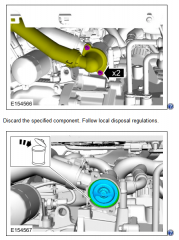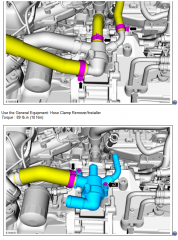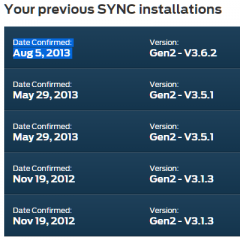

plus 3 golfer
Hybrid Member-
Posts
2,688 -
Joined
-
Last visited
-
Days Won
356
Content Type
Profiles
Forums
Gallery
Everything posted by plus 3 golfer
-
xx
-

low beams do not work
plus 3 golfer replied to sixxgunscott's topic in Glass, Lenses, Lighting, Mirrors & Wipers
Are you still under the 3/36 B2B warranty? The Body Control Module controls the high / low beams (there are no switching components (relays) that can be replaced). The first thing to do is to verify that the low beam bulbs are okay. The headlight switch communicates with the BCM over the Local Interconnection Network (see quote below). The headlight switch (with fogs) has an MSRP of about $134. I keep harping on this but for about $30 one can get an ELM327 adapter to plug into the OBDII port and the ForScan App for a smartphone to scan modules for Diagnostic Trouble Codes. There are a number of DTC for the headlamps and BCM. "Low Beams The headlamp switch sends a status message over the LIN circuit to the BCM to indicate the headlamp switch status (position or a fault within the headlamp switch). If the BCM detects a fault from (or loses communication with) the headlamp switch, the BCM turns the parking lamps and headlamps on. This is normal behavior of the BCM design as a fault has been detected with the inputs from the headlamp switch. When the BCM receives a message requesting the headlamps on, it supplies voltage to the headlamp bulbs." -
Looks like mine (which I assume is normal). :) fordparts.com shows the fender shield (the black plastic part that takes up most of the right side of your pic) as one large unit. There are no other pieces shown. The Service Manual also shows only the installation and removal of the fender shield (no other pieces are shown). I've changed my oil 6 times so far and rotated tires several times and don't recall seeing anything different than what your pic shows. The driver's side is similar.
-
ForScan scans all Ford modules for codes. Generic scanners will likely not scan all modules for codes. Did the "check engine light come on (MIL)"? Has the car over heated after the first incident? Hope the thermostat is the problem. Are you still covered under the 3/36 B2B warranty? Below is the cooling strategy from the Shop Manual. When reading this I assume that P1285 might not be stored if the condition that triggered it went away since it doesn't trigger an MIL. But it certainly seems like if you lost power ("limp" mode where fuel injection is disabled into alternating cylinders). P1299 should be stored until reset and you should have got an MIL (check engine light). Also with ForScan (like obob was saying) you can monitor data points (PIDs) like engine coolant temperature (inferred from the Cylinder Head Temperature sensor) on a continual basis. On longer trips, I continually monitor data like coolant temperature, grille shutter position, and tire pressure, voltage and so forth for abnormal readings.
-
The generally "accepted" test for a failed thermostat (or water pump) absent a diagnostic tool is to see if the outlet hose from the radiator is "cool" when the car is really overheating. Using ForScan might quickly point to the issue as it would show DTCs and data including perhaps status of various components that could affect cooling. There should be at least one DTC for the engine overheat condition when the dash light comes on. When the PCM (based on Cylinder Head Temperature sensor data) triggered the "limp" mode another DTC should have been set. IIRC, the trigger point for the engine overheat condition is in excess of 235 F. From the OBDII Operations Manual, if CHT > 270 F, DTC P1299 is set and MIL illuminates immediately . Fuel shut-off is activated to reduce engine and coolant temperature. This DTC along with other CHT checks and possible DTCs are included in the Enhanced Thermostat Monitor function and coolant pump monitoring (e.g.,P26CB – Engine Coolant Pump Performance/Stuck Off). IIRC, someone did get to the first step of the fail-safe cooling algorithm where the dash overheat light illuminates (not MIL) with grille covers on and going uphill at a fairly high speed. With my grille covers on, I've seen the ForScan ECT PID reading in the mid 230s F going uphill at 70+ mph on interstates with ambient temp around 50 F. When this happens, the grille shutter PIDs show the shutters are wide open (but of course air flow is blocked by the covers). :)
-
-
From the album: Plus 3 Golfer
-
I agree in general (not that useful to most people). Ford says that the regenerative braking simulates conventional engine braking when taking foot off the accelerator not that simulating engine braking is the "most efficient" thing to do. It's likely many would not adapt quickly to something different from normal engine braking and "complain" :) I would rather have complete control over regeneration when I take my foot off the accelerator with the opportunity to optimize FE. The mode that appears to be most advantageous to me is coasting with no regeneration (legally :)). I would think that in cruising on highways with rolling hills, one would save energy by coasting with no regeneration vs coasting with normal "engine braking" regeneration. The only way to coast now with no regeneration is shifting into neutral. How many times does one back off the accelerator when cresting a hill and then have to reapply the throttle before reaching the bottom. If speed becomes a problem with coasting with no generation, one can control the speed with slight braking or even bumping the selector back to "normal" or "maximum" regeneration. The benefit gets back to added aero losses (coasting in neutral vs in gear) vs the regeneration penalty which is IMO more than most believe it is.
-
Are you trying P&G in neutral or something else (fbov suggestion)? :)
-
I believe the Jetta Hybrid e-golf allows the driver to select the amount of regenerative braking to apply when coasting in gear ( 3 positions IIRC) Maybe Ford will implement this on its next generation. It would be nice to have one position to be no regenerative braking or at least very little regenerative braking (maybe just offset the HVB drain and no charging of the HVB.). Early on I used neutral going down hills on the interstates until one time I forgot I was in neutral and tried to accelerate going back up the hill with traffic on my tail. I quit using it. Edit: it's the e-golf not the Jetta Hybrid:
-
I think the point is the regenerative losses (penalty) exceed the "added" aero losses. So, shifting to neutral makes sense when using pulse and glide. Use the kinetic energy at the wheels against aero drag and glide farther and not scrub off energy for inefficient regeneration. I believe the 10% regen penalty comes from Ford in literature and a video. In Ford's videos on hybrids (discussed over a year ago) they say the car captures 90% of the available braking energy AND then sends it back to the battery to be stored. So, apparently the 10% is really the losses in the traction motor and perhaps some additional transmission rotational losses. There are additional losses in the conversion of the AC output of the traction motor to DC, storage losses in the HVB, conversion of the DC back to AC and running the traction motor to drive the car. Several years ago I found a curve on the efficiency of traction motors. The most efficient in use were around 92% peak at the time. The AC to DC converter is likely no more than 95-97% efficient. The HVB likely has around a 1% charge / discharge loss. So, the efficiency of the regeneration overall process (mechanical energy at the wheels to electrical energy in the HVB and back to mechanical energy at the wheels might be = 0.92*0.95*0.99*0.95*0.92 = around 75% . I also in a post over a years ago linked to a study on regenerative braking (older study) and IIRC the overall efficiency was between 50% and 60% based on several regenerative braking strategies.
-
We've used Odoban for many, many years for eliminating pet odor especially after "accidents". Watch the video. It has never let us down.
-
XX
-
IMO, the answer to "what is best for FE" (original question) is to use the potential energy of the hill in the order below without exceeding a safe speed. I think most posters have generally hit on the points on the list in the same order. I will move up and down the list when going down steeper, longer hills especially on two lane mountain roads. I look ahead and anticipate my next move on the list with the goal of maintaining as much safe speed as I can at the bottom of the hill. I generally don't use "N". I find that on interstates, the speed limits (speeds I drive at) and grades of the hills are generally such that I just leave eco-cruise and grade assist on continuously. 1) coast in neutral (if one has no issues with it) and engage grade assist (can wait to step 3 but I usually leave it on in mountainous areas) 2) coast in gear - regenerate the minimum amount energy that one can. This uses the least amount of the available potential energy of the hill. There are mechanical to electrical to mechanical energy losses that one generally wants to minimize. 3) engage grade assist (if not already on) as it will vary the amount of regeneration to maintain speed beyond just coasting in gear. Engine braking will be automatic if speed increases too much. 4) shift to "L" to increase engine braking or use friction brakes or both together. One needs to slow down. 5) use friction brakes.
-

Cmax doesn't seem to use battery power that much
plus 3 golfer replied to Taiwwa's topic in General Discussion
The C-Max transmission is not a conventional CVT like the Honda Insight uses. The Insight runs in Parallel Hybrid mode. The C-Max uses a power split transmission like the Prius. Thus, the C-Max can run in Parallel Hybrid mode and Series Hybrid mode which IMO allows more "gaming" to increase FE. IMO, learning the tricks can increase FE. But it does take a little work / discipline to continually "hyper-mile" to achieve better FE - some like to do it others like me don't. :) I also find that when I do hyper-mile, I decrease average speed from when I set eco-cruise 3-5 mph above the speed limit and thus add time to trips. With respect to "there is also reduced power as the battery is drawn down also? Might explain it?" , my guess is that although there may be some loss in maximum power output of the HVB as SOC declines, over the SOC normal operating range in question, the decline in the threshold level of when ICE comes on is more related to controlling the rate of discharge in EV mode once a certain SOC level is reached and holding in reserve enough HVB capacity (energy) for perhaps "emergency" situations like WOT acceleration. If you look at the discharge curves for Lithium Ion batteries (assuming the C-Max curves are similar), the voltage is fairly flat in the mid range of SOC at a fixed discharge currents. If more load is placed on the battery, voltage drops and current rises. So, the load requirements can still be met at a wide range of SOC. There is a knee to the discharge curve (voltage vs SOC) that once exceeded the voltage will rapidly approach zero. Now add in higher discharge rates and the knee moves from a lower SOC to a higher SOC. One has to avoid the knee of the curve. One can find discharge rate curves where the knee might be around 20%+ SOC. Also, in Lithium Ion batteries the higher the discharge current, the lower the effective capacity (energy stored). So, one needs to maintain enough energy stored in the battery and stay above the knee for emergency situations like WOT acceleration. We hope Ford engineers designed the algorithms appropriately. :) -
See my corrected post. In my haste I got it backwards. It was a "joke". The OP arguments fail as to putting slightly oversize tires on a car. I was simply trying to give him an alternative. If 91/92 tires are within load "range", when does a tire become out of load range. Why not put an 89 or 87 tire on????
-
Do whatever you desire. Justify it however you want to. So, I guess my transmission will likely fail very soon given my 2.59 final drive ratio vs the Energi's 2.91. I don't know anyone who has put oversize tires on their car that had transmission failures because of the tires nor got worse FE than the standard tire. In fact, most report a significant increase in FE at cruising speed.
-

Cmax doesn't seem to use battery power that much
plus 3 golfer replied to Taiwwa's topic in General Discussion
You can get very different results depending on the SOC when one starts the trip and ends the trip on short identical trips. Operations of the Hybrid system is designed to ensure long HVB life while taking advantages of efficient charging by ICE of the HVB. The hybrid algorithms can't look ahead as to future road conditions and your possible inputs. So, you as the driver have to anticipate conditions and control the use of ICE and the HVB to some extent to squeeze out more efficient Hybrid operations (hypermiling). For example, you might be able to back off the throttle going uphill to allow EV operations all the way to the top and regenerate coasting down hill. But, if the algorithm continually allowed the cycling of the HVB down to 30%, HVB life would likely be reduce. So, there are limits in the algorithm. If you watch the Empower screen you will see that the load threshold for ICE coming on drops as the SOC declines. At 40% SOC it doesn't take much load to trigger ICE on. Unless you reduce speed (on the flats and especially uphills), ICE will likely come on. Also, below is a graph I plotted from actual data. You can see that 40% on the dash battery symbol is about 42% SOC of the HVB not 60%. -
So, your Energi weighs maybe 600+ pounds for than the Kia EV and you choose to go with a tire sized and load rated for the KIA ??? Why not choose the Bridgestone Ecopia Plus tire in 205/65R16 which has the proper load rating for your Energi? It's virtually the same price as the N Blue. It's revs/mile is lower by around 2+% which should effectively give you a numerically lower final drive ratio and likely improve highway FE. The Nexen tire will yield a numerically higher effective final drive ratio and likely hurt FE.
-

MFT update to v3.8 has been released
plus 3 golfer replied to raadsel's topic in Audio, MyFord, Navigation & SYNC
All "serviceable" Field Service Actions done. The only item showing up is 12M02 - warranty extension on APIM. -

MFT update to v3.8 has been released
plus 3 golfer replied to raadsel's topic in Audio, MyFord, Navigation & SYNC
It's time again to show the inadequacies of Ford. It's 12/8/2015 and the Ford Owner's site still shows my Sync is up to date with V3.6.2. It's nearly 2 months since this issue of not showing the V3.8 update on the Ford owners site was reported here and supposedly to Ford. Read how committed Ford is in the snips below to keeping my car up-to-date. ;) I am "running the fastest, simplest, and best version of Sync."- Ford I want to update my Sync with software that I can download from Ford's Sync site not from a site with a file posted by anyone nor waste my time going to a dealer. My guess is that if tried to get the dealer to do the update, they wouldn't do it for free as there's likely nothing that shows the dealer that my car "needs" the update - it's not worth my time and energy pursuing with the dealer. BTW, I changed my preferred dealer in owners.Ford a second time recently and noticed that my selling dealer had also changed to the new preferred dealer (on the first change, the selling dealer stayed the same). There no way I can see to edit the selling dealer as that apparently is / was filled in by Ford when signing up initially with ones VIN. :) :) Oh well, that's "par" for Ford - but par vary seldom wins in golf or customer satisfaction surveys.





